
30 Nov, 2015
Is promoting gay travel contributing to the spread of HIV/AIDS?
Bangkok – The announcement of an “organizational partnership” between the Pacific Asia Travel Association and the International Gay and Lesbian Travel Association has raised some serious fundamental questions about the appropriateness of promoting gay travel in a cultural context as well as its linkage with the spread of HIV/AIDS.
On the one hand, the IGLTA community has every right not to be discriminated against. On the other, countries have every right to protect their citizens against health problems.
When it first erupted in the 1980s, the AIDS pandemic was considered one of the worst health crisis of that generation. Other crises have occurred since, such as bird flu, SARS and Ebola Nearly all countries require health documentation to prove that inbound visitors have not visited countries with a high prevalence of communicable diseases such as smallpox and yellow fever. Many countries, especially Australia and New Zealand, have severe restrictions on food imports.
As the GLT community is proven to be at higher risk of HIV/AIDS, governments have every right to ensure that they do not pose a health risk to the country.
The GLT community is promoting itself as comprising high-spending travellers with substantial economic value. Gay and lesbian travel is robustly promoted at numerous international travel trade shows such as the ITB Berlin and ITB Asia. Now, PATA has joined the bandwagon with the November 5 signing of an agreement with the IGLTA designed to “strengthen the bond and shared interests between the two associations.”
According to the joint media release, “The agreement commits the two organisations to share knowledge through research and publications, to reciprocate in event participation, to support mutual agreed advocacy positions, and to enhance access for the benefit of members of both organisations.”
PATA CEO Mario Hardy was quoted as saying, “As PATA works for the responsible development of travel and tourism to, from and within the Asia Pacific region, it is important to recognise and inform our members that gay and lesbian tourism has a significant impact socially and economically across the globe. We are proud to support them in their activities, as PATA continually works to establish bridges for people of goodwill from all countries to access each other and empathise with each other.”
IGLTA President/CEO John Tanzella added, “IGLTA’s role is to identify businesses globally that are welcoming to lesbian, gay, bisexual and transgender people and to share that network with LGBT travellers so they know where they will feel safe. We are thrilled to partner with PATA, a leader in responsible Asia-Pacific tourism, to enhance LGBT outreach in this region and provide their members with the education to better serve our community.”
As sharing knowledge through research and publications is a key component of the agreement, a little more research would have shown that a gay lifestyle still remains a major contributor to the global HIV/AIDS pandemic, which national tourism organisations need to be equally cognizant of, especially in the PATA region.
Here is a report published in July 2012 in TIME magazine:
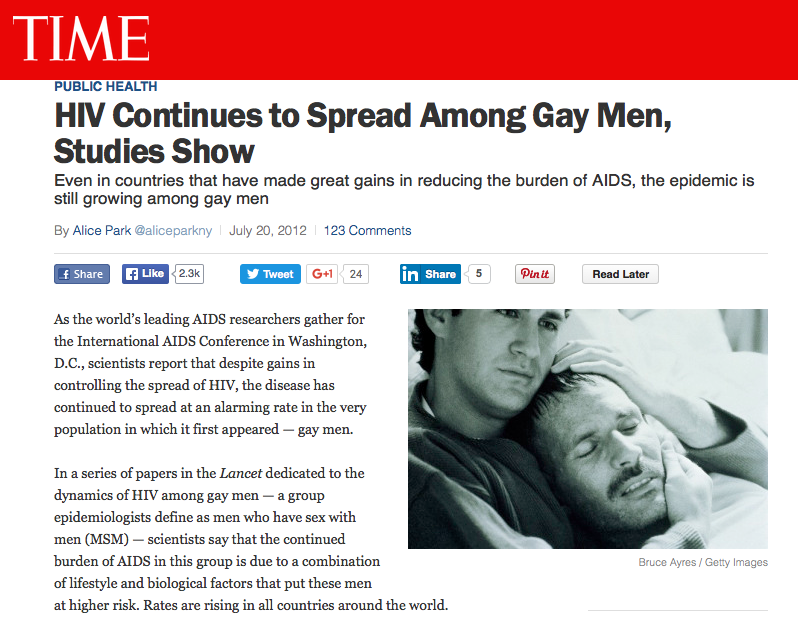
According to a UNAIDS report, Thailand has an estimated 440,000 people living with HIV with 18,000 deaths of AIDS-related illnesses in 2013. After sub-Saharan Africa, the Asia-Pacific region has the largest number of people living with HIV, with Thailand accounting for approximately 9%.
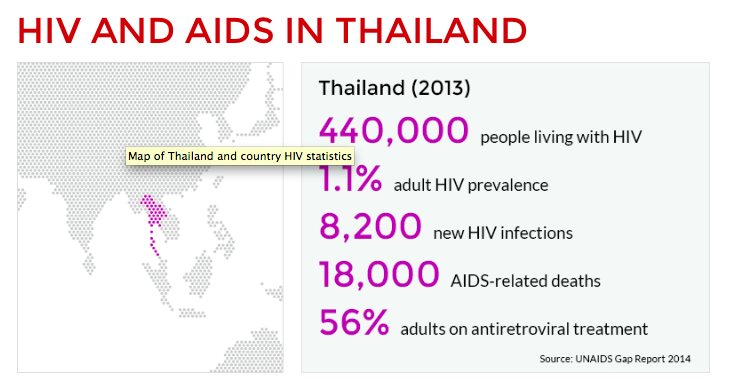 According to the same report, 90% of new adult HIV infections in Thailand are transmitted via unprotected sex. Of all new infections, 41% were among men who have sex with men (MSM), male sex workers (MSW), and transgender people. In Bangkok, HIV prevalence was 24.4% compared to the national HIV prevalence of 7% for this population across all of Thailand.
According to the same report, 90% of new adult HIV infections in Thailand are transmitted via unprotected sex. Of all new infections, 41% were among men who have sex with men (MSM), male sex workers (MSW), and transgender people. In Bangkok, HIV prevalence was 24.4% compared to the national HIV prevalence of 7% for this population across all of Thailand.
Another report says the following:
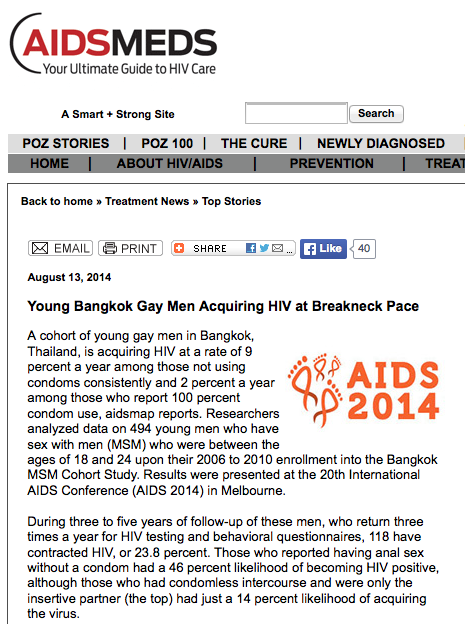
According to the technical brief, HIV And Young Men Who Have Sex With Men, published in October 2015 by the World Health Organisation, transmission of HIV is 18 times more likely to occur through unprotected receptive anal sex (between MSM or between heterosexuals) than through unprotected vaginal intercourse. Frequency of unprotected sex increases risk of exposure to HIV, and some younger MSM are more sexually active than their older counterparts.
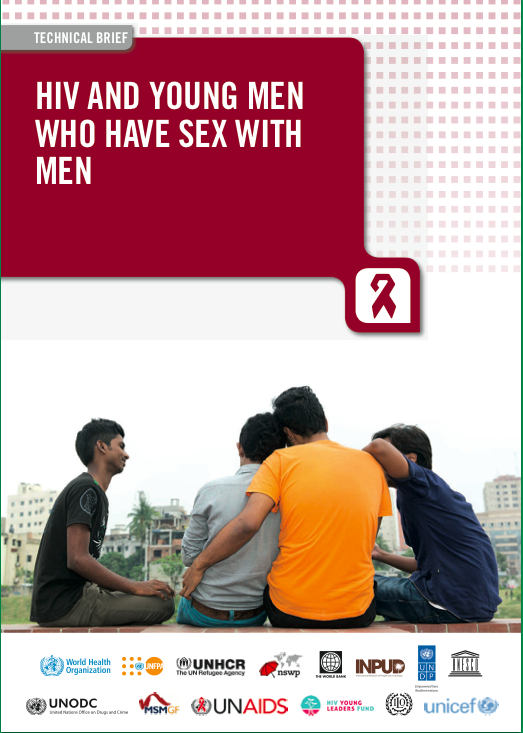
In the United States, the Centre for Disease Control and Prevention reports that gay, bisexual, and other MSM of all races and ethnicities remain the population most profoundly affected by HIV.
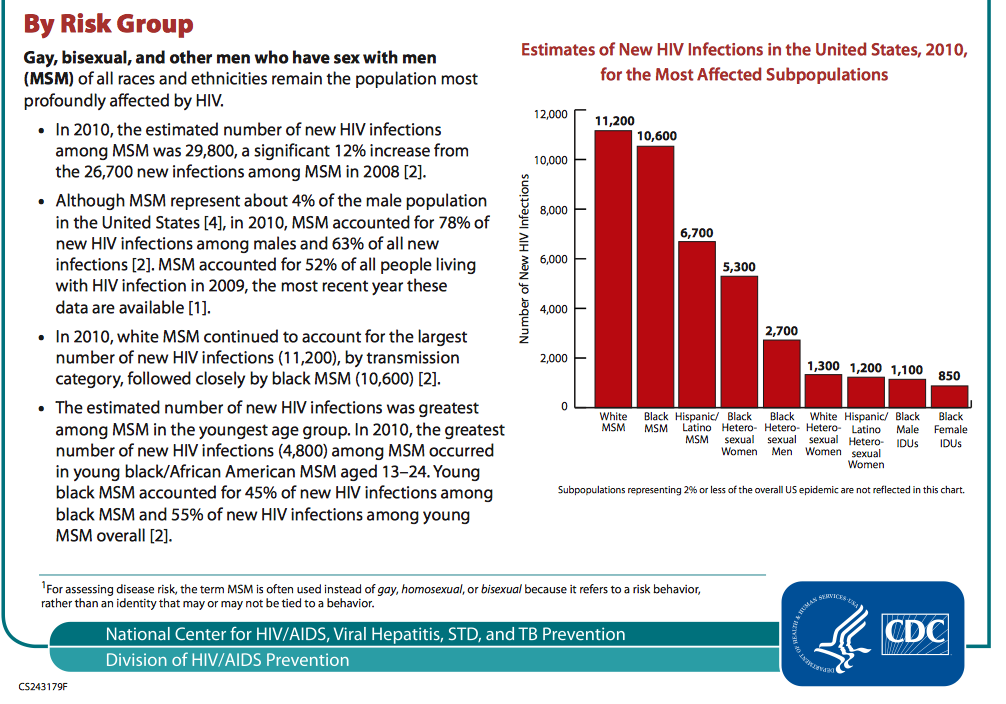
According to the CDC, by the end of 2011, an estimated 311,087 gay and bisexual men with AIDS had died in the United States since the beginning of the epidemic, representing 47% of all deaths of persons with AIDS. An estimated 5,380 died in 2012.
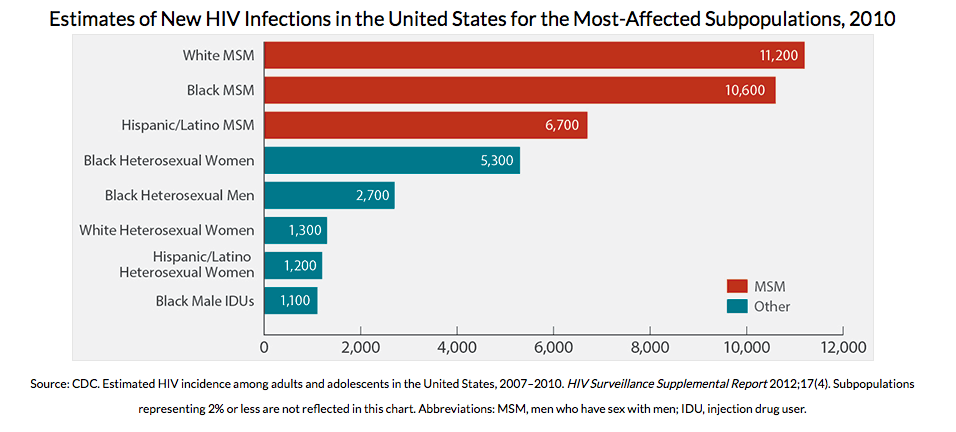
In 2013, gay and bisexual men accounted for 55% of the estimated number of persons diagnosed with AIDS among all adults and adolescents in the United States. Of the estimated 14,611 gay and bisexual men diagnosed with AIDS, 40% were blacks/African Americans; 32% were whites; and 23% were Hispanics/Latinos.
The latest research, released on 27 November 2015 by UNICEF, the UN Children’s Fund, said that the number of adolescent deaths from AIDS has tripled over the last 15 years.
According to the research, AIDS is the number one cause of death among adolescents in Africa and the second leading cause of death among adolescents globally. Among HIV-affected populations, adolescents are the only group for which the mortality figures are not decreasing.
In sub-Saharan Africa, the region with the highest prevalence, girls are vastly more affected, accounting for 7 in 10 new infections among 15-19 year olds.
The data reveal that currently among adolescents (15-19), 26 new infections occur every hour. About half of those living with HIV are in just six countries: South Africa, Nigeria, Kenya, India, Mozambique and Tanzania.
UNICEF’s Statistical Update on Children, Adolescents and AIDS report can be downloaded here: http://www.childrenandaids.org
Although the battle against HIV/AIDS is making substantial progress at both the medical and social levels, it is a long way from being eliminated. Given the scale of the problem, and the well-proven risks involved, for travel & tourism associations to aid and abet the promotion of a gay lifestyle because of its “economic value” makes no sense. There is a very thin line between an anti-discrimination position established as a human right and the corresponding human right of the general public to be kept safe from health problems.
In the PATA region, promotion of a gay and lesbian lifestyle also runs into all kinds of cultural and social issues. This editor sent a number of questions to Mr. Hardy focussing just on this issue. His responses:
(+) Are you aware that there are numerous countries in the PATA region where homosexuality is still considered culturally and socially taboo?
A. Absolutely; both organisations are fully aware of the sensitivities of the topic and we fully intend to respect those.
(+) Without being judgemental, shouldn’t PATA be respecting those norms?
A. We are! Sharing knowledge, data, research for a better understanding is for everyone irrespective of their gender, sexual orientation, faith or political beliefs.
(+) If PATA events are held in these countries, will the IGLTA get full marketing access?
A. As far as marketing, it will depend in which form and where the event is hosted and if done will be in a respectful and non intrusive manner.
(+) Will PATA require those countries to give IGLTA access in order to host PATA events?
A. The PATA Travel Mart is a trade show for people to do business. The option to accept appointments or visit a booth is entirely up to the visitors. I don’t believe host destination will necessarily need or want to be involved in deciding who can and can not exhibit. I also know that IGLTA management is aware of the sensitives and will accept to respect the choice of destinations.
+) If they refuse, will PATA rule them out of the bidding?
A. The answer is no we wouldn’t rule them out; but I believe it is unlikely that this would come up as an issue.
(+) Will IGLTA have full access to the PATA Travel Mart in Jakarta? If the Indonesians do not feel it appropriate, what will PATA do?
A. As far as delegates; we will welcome anyone that wants to attend. As far as having a booth at the event; it is not a discussion we had so far and will cross that path if and when we reach it with both Indonesia and IGLTA.
(+) Are you prepared for the possibility that some destinations may object to having an overt IGLTA presence at PATA events?
A. There seems to be too much emphasis on events in this interview; the agreement isn’t about events. Its about sharing knowledge, data and research for a better understanding. We will endorse and promote each others events and it is up to our respective members to make a choice if they wish to participate or not.
(+) How will you deal with the IGLTA if they insist on having a presence at PATA events, regardless of where they are held?
A. Our agreement is based on mutual respect of each others profile and engagement with our respective communities. Both management teams are aware of the sensitivities of the topic and will respect each others decision in the best interest of its respective members.
(+) Who initiated this organisational arrangement?
A. It was a joint decision! IGLTA members are keen to learn about the Asian market and its fast growth; their corporate members are business owners like PATA members and equally want to grow their business.
(+) Do you think the benefits outweigh the risks and complications that may ensue, including possible membership loss.
A. There isn’t a risk; there are only opportunities; I believe this is a simple agreement between two organisations that wants to build better understanding and grow their respective membership by cross promoting its respective activities.



Liked this article? Share it!